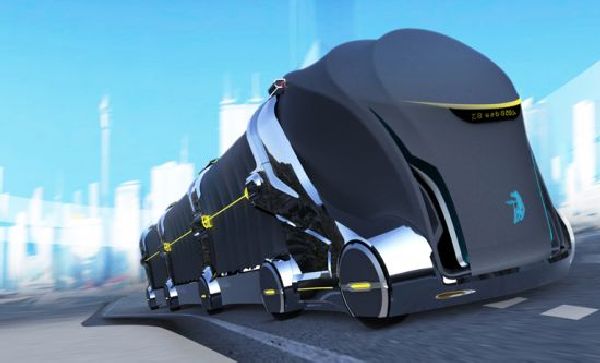
What’s happening right now?
Previously when we had talked about transportation, it was about the private side of affairs. But what about the massive public transit systems co-existing with the severely cramped and congested environments of our cities? The modern economy is bound by the threads of communication, and public transportation certainly forms a crucial part of it. There is also another side to it which is much so prevalent in the urban fabric of developing countries. In these cases the quality of living for the majority is not so high, so as to afford private transportation, and hence public transit systems become all the more important for them. An apt example would be Mumbai’s suburban rail systems carried a total of 6.3 million passengers every day in 2007, which was more than half of the Indian Railways (the fourth largest railway network in the world) daily carrying capacity.
But since the transit systems are built on a massive scale, the level of pollution and emissions emanated also tend to be high in magnitude. Instigated by such situations, designers, urban planners and researchers are looking forth to integrate zero-emission public transportation for a sustainable future ahead. And judging by the trends, they have certainly progressed in the right direction.
Trends:
1. Proterra electric bus:
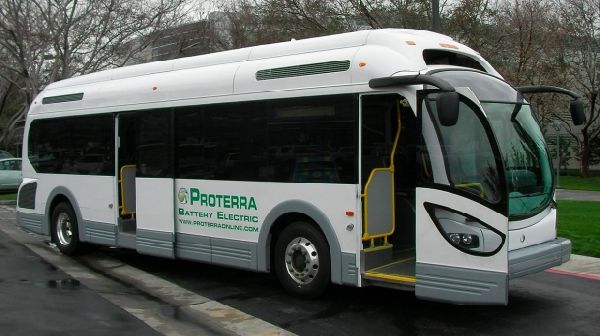
A collaborative effort by the companies Proterra and Altair Nanotechnologies, the all-electric Proterra bus is a bus with a clear and convenient difference. Other than having zero emission mode, the bus also incorporates a super-fast charging capability on its rooftop, in the form of Altair-nano batteries. The bus has a capacity for 68 people, and MPG equivalent of 18 and 29 miles per gallon diesel fuel equivalent (5 times more fuel efficient than conventional buses).
2. Volkswagen Milano Taxi:
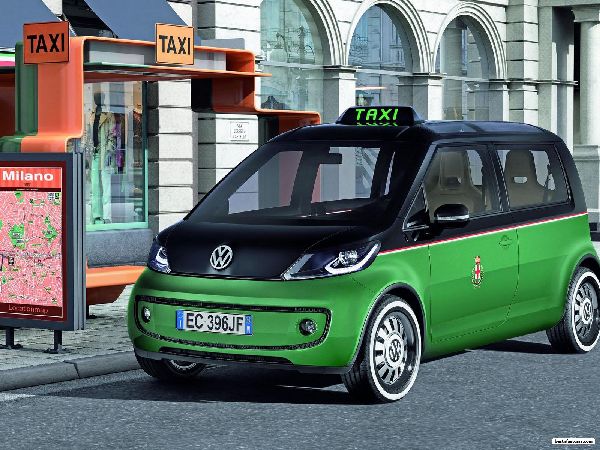
A zero emission ride from the German auto giant Volkswagen in the form of a compact taxi, and this time it will spurt through the gorgeous albeit congested streets of Milan. The petite taxi with a length of 3.73m will be powered by an electric motor. And its comparatively spacious interiors will emanate a modernistic ambiance by a plethora of features such as a touchscreen, temperature control, internet connection and even credit card transaction facility.
3. Aero Train- Zero emission:
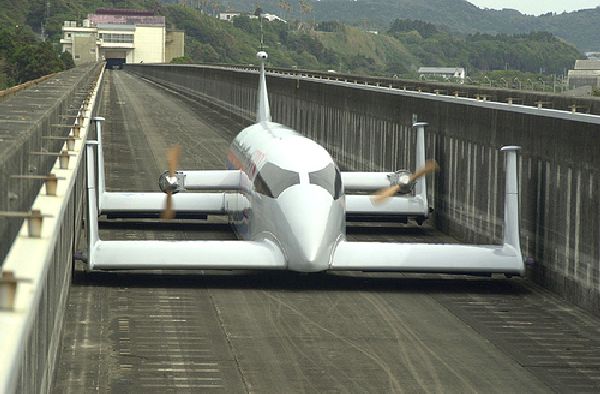
Is it a bird, is it a train? No, it is the all new and revolutionary Aero Train concept. It may look like the futuristic version of those magnetic levitation trains, but while it will travel with speeds in excess of 500kph (with an altitude of 10 cm), the mechanical complexity and expensive tracks of magnetic levitation would be nullified in this conception. Also the concept is promoted to be a fuel efficient, noise efficient – zero emission train.
4. TAKHT LAHORI – zero-emission bus:
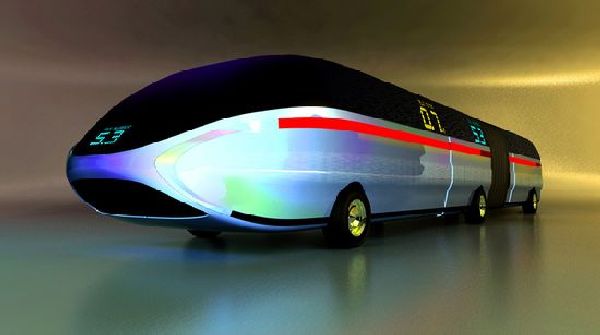
One of the entries for “My City” scholarship competition of Instituto Europeo di Design’s School of Transportation Design, this wondrous conception was put forth by designer Ali Murtaza to counter the effects of congestion in Lahore. The bus will incorporate in-wheel motors powered by lithium-ion batteries. The batteries in turn would either utilize solar panels or normal A/C outlet, while the bus will integrate an advanced safety feature in the form of an “Active Bumper” that can provide air bags at critical zones.
5. Setra Coach – Zero emission public transportation:
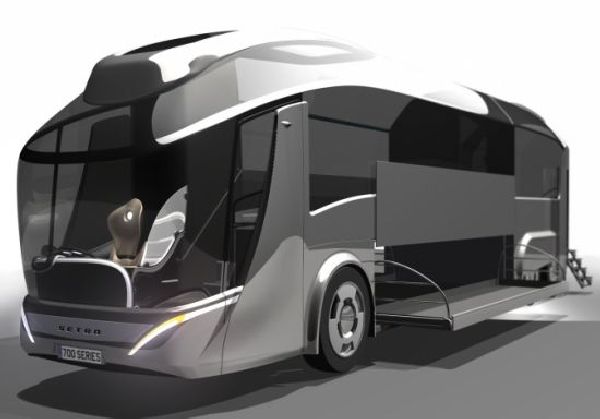
Designer Peter Spriggs has come up with a zero emission mode of public transportation fused with dollops of conscientiousness. The Setra 700 Series vehicle has a 225kw zero emission electric motor of 400bhp, powered by lithium-ion batteries, but on the practical side it has been specifically conceived for differently enabled people.
6. Hypersonic The Airstream Train:
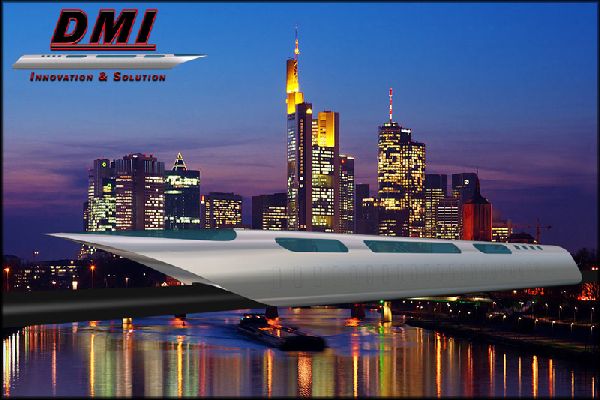
A concept that imbibes the futuristic confluence of Hovercraft and Train Technology; the Airstream train will use a Scramjet engine that is touted to reach an exhilarating speed of 10 Mach (though the train itself will travel at a speed of around 472km/h), while it will be fuel efficient and noiseless at the same time.
7. Sustainable Maglev Public Transport System:
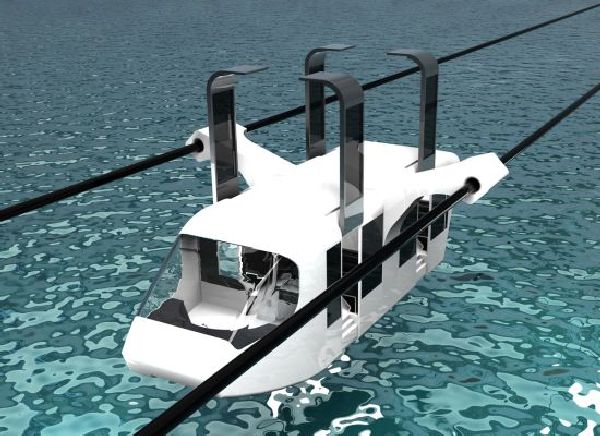
Based on the recent advancements made in the system of Maglev (magnetic levitation) transportation, industrial designer Chris Hanley has contrived a zero emission transit system, whose tracks will be suspended above main roads and streets of major cities. This new network would utilize skyscrapers as stations, in effect totally countering the road congestion and traffic. The contraption will also feature 360 degrees mechanism, while its “wings” will connect to the “hanging” track, keeping the cabins free from offsets.
8. “Credo E-Bone” Eco Concept for Public Transport:
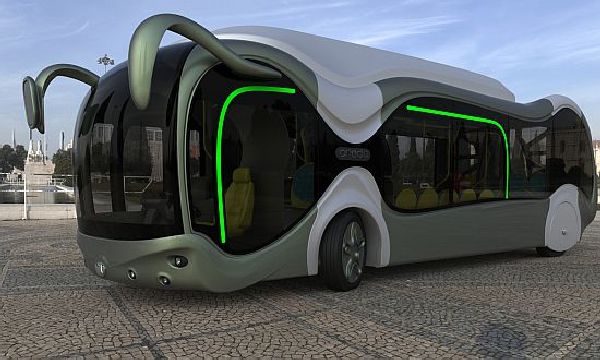
Don’t let the bizarre name get to you, but “Credo E-Bone” is one hell of an advanced conception. This bus will be uniquely powered by hydrogen fuel cells and additionally by lithium-ion batteries integrated on its roof. Moreover, the bus will be composed of ultra-light composite plastic, making it more energy efficient on the long run.
9. AutoTram – Future Public Transportation:
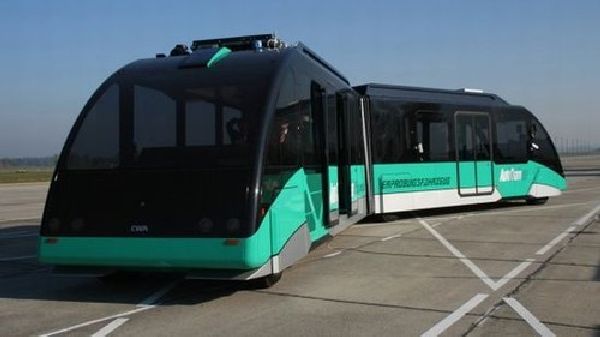
Now we see a confluence of bus and tram in the form of this remarkable design known as the AutoTram from the Fraunhofer research team. This innovative system will not utilize tracks and overhead wires as conventional trams do, but would rather exhibit a set of wheels that will run on a demarcated white line. The bus-tram will incorporate a sturdy electric engine, powered by lithium-ion batteries. It will also have super-capacitors for reduction of recharging time.
10. Biway – All-Electric Buses Combine To Form A Train:
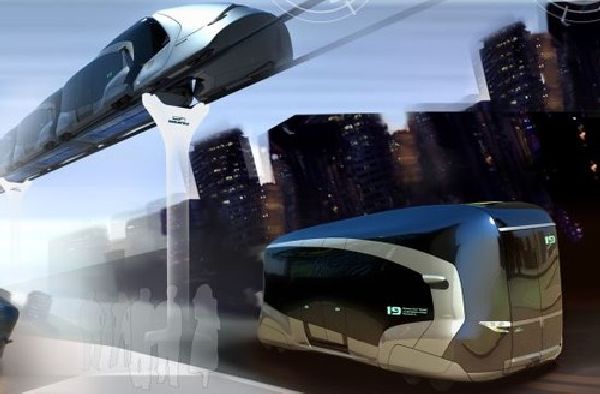
And finally we witness the interesting fusion of our familiar bus and train. An entry for the Michelin Challenge Design 2010, the “Biway” is a concept from designers Aleshina Ekaterina and Kamyshev Vitaly. Basically the system can be divided into two components. The first component includes an all electric bus, while the second component combines the buses to form a singular train that runs on a specially designed fiber freeway. The “train” can recharge itself on connection with this freeway. Overall the design looks forth to simplify the transit system by adopting a nigh modular pattern, where passengers can easily switch their buses without any concern for their ultimate destination.
The concept:
All of the above conceptions can be categorized under zero emission vehicles (ZEV), and by definition ZEV is a vehicle that emits no tailpipe pollutants from the onboard source of power. Henceforth the total system of public transit can go through a “green” metamorphosis, and at same time be fuel efficient.
The advantages:
As already mentioned, we are surely looking at a much reduced level of pollution and emissions in the future, if such conscientious conceptions come to be realized. Furthermore, the positive effect on the economy, cost effectiveness of transportation and most importantly the provision of convenient rides to the public can certainly prove to be beneficial in the long run.
The impact:
Public transit system has always been a major part of our contemporary economic infrastructure (especially in developing countries). Now if this crucial component of our economy advances along a pollution-free, zero emission direction, the total assimilation of sustainability occurs on a massive scale. In effect, an ordinary citizen can play his/her part in the “green” race toward a clean and sustainable future.




